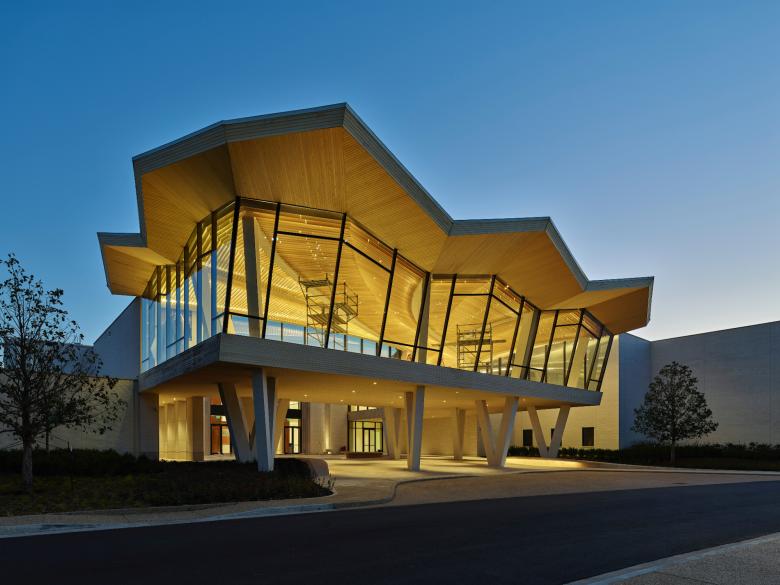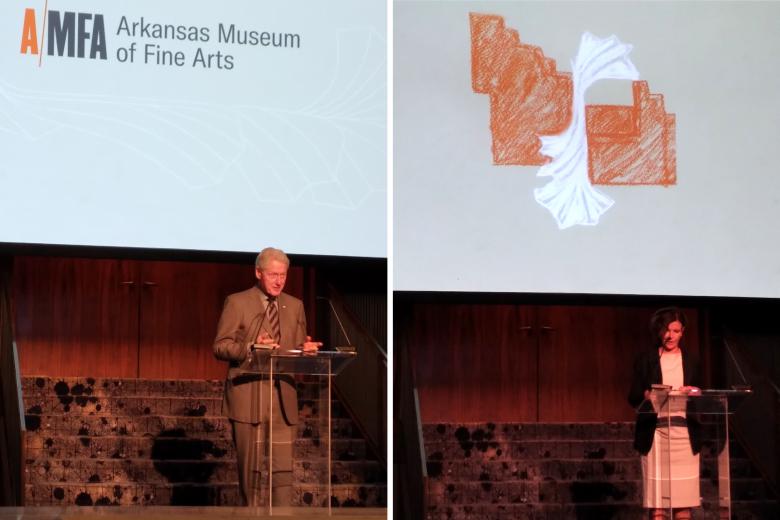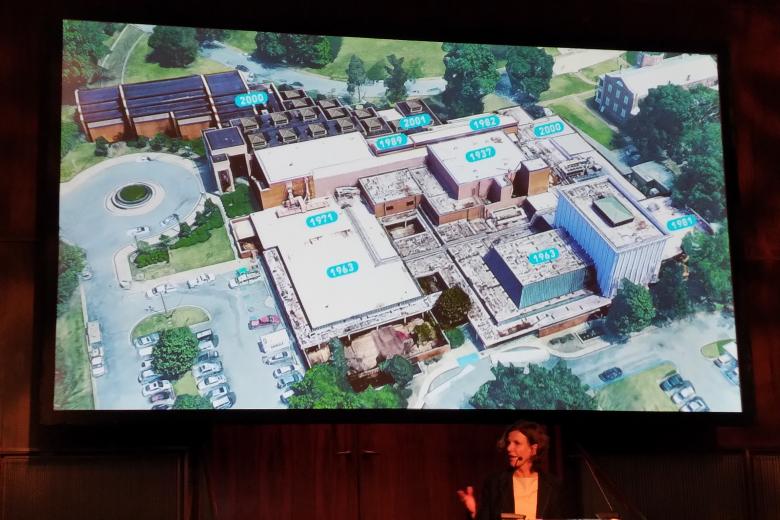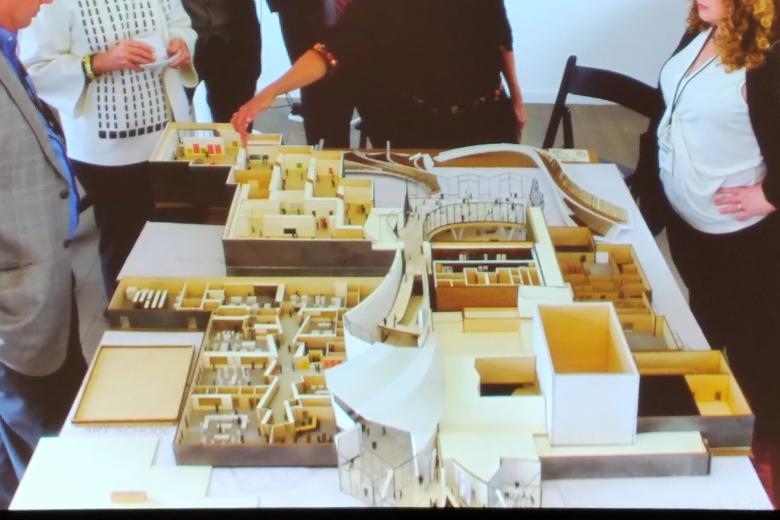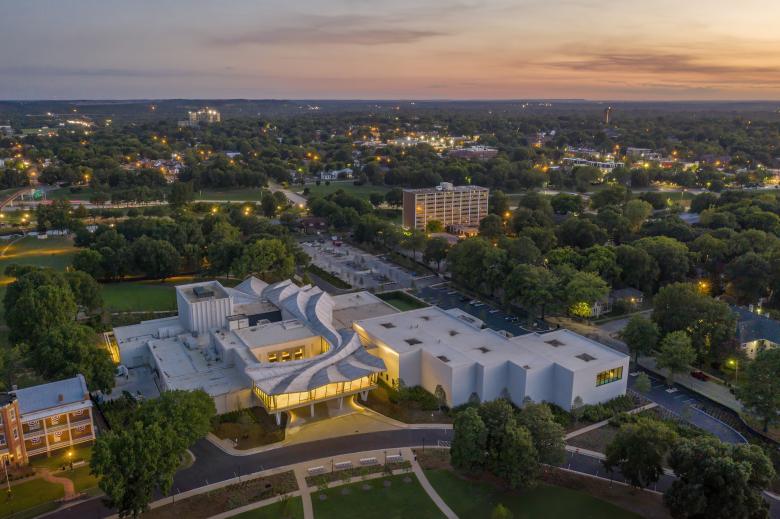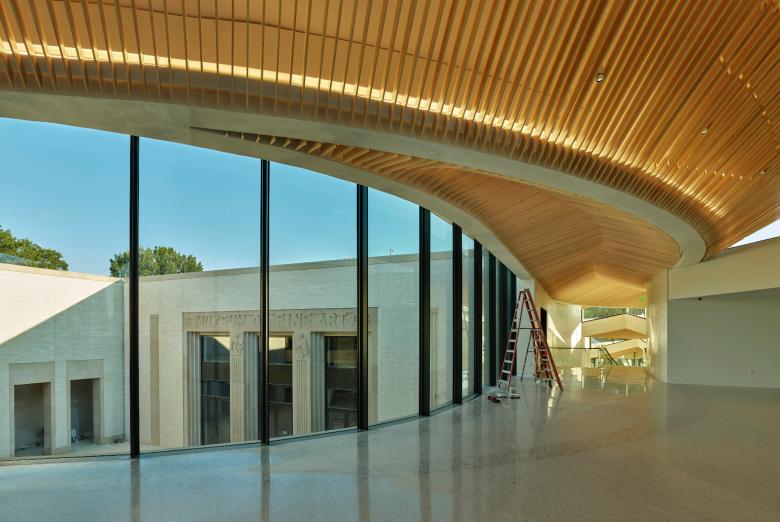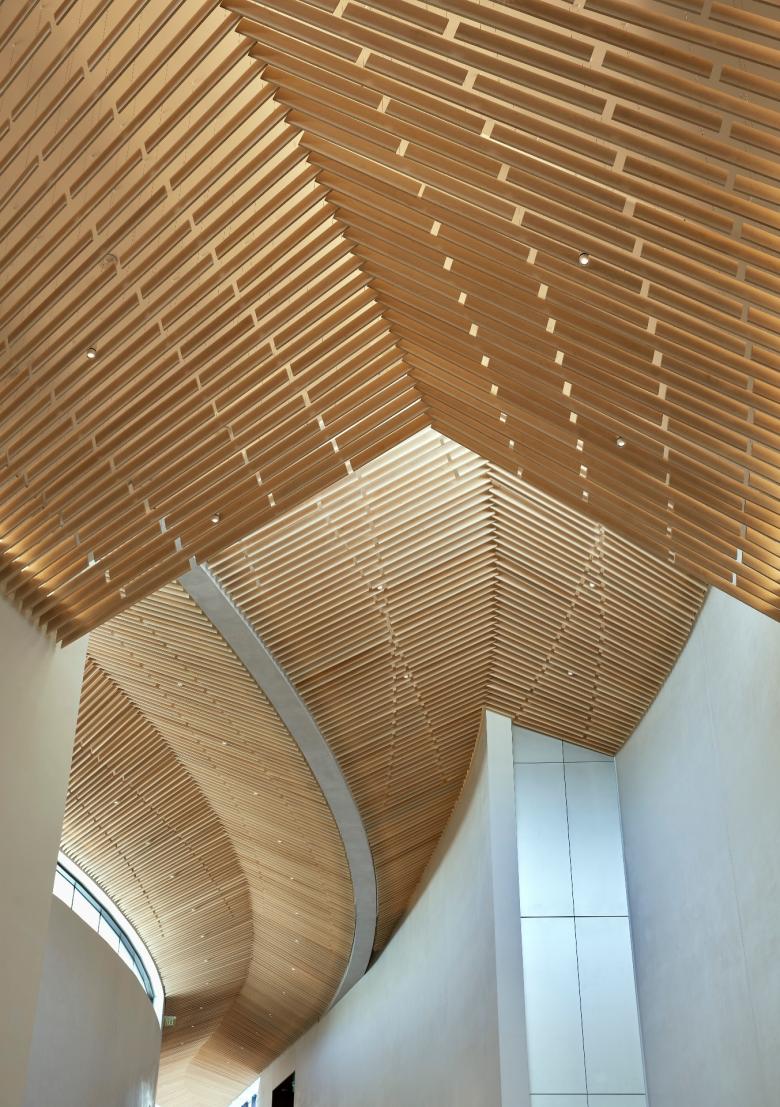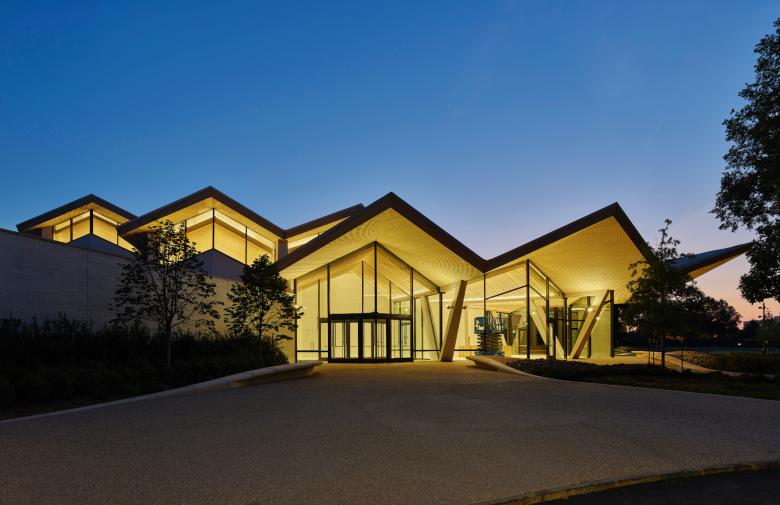AMFA Nears Completion in Little Rock, Arkansas
The transformation of the Arkansas Museum of Fine Arts (AMFA), designed by Chicago's Studio Gang with Little Rock's Polk Stanley Wilcox Architects, is nearly complete, with an opening date of April 22, 2023, recently announced.
About a hundred people gathered at The Pool inside the Seagram Building in Midtown Manhattan on Tuesday, October 18, to hear about the exhibitions that will accompany the AMFA's grand opening in April, learn about the Studio Gang design that knits together 85 years worth of museum annexes, and applaud the nearly $155 million raised for the "Reimagining the Arkansas Museum of Fine Arts" project — about $30 million more than its original goal. But before those comments, Bill Clinton, 42nd president of the United States and — more importantly in these proceedings — an Arkansas native, spoke to the crowd about the significance of the AMFA in his youth and his excitement over the museum's transformation. The institution formerly called the Arkansas Arts Center was more than just a museum to Clinton and others in and around Little Rock: the art school, performing arts theater, lecture hall, and store made AMFA a hub in the community, something the new building and landscape aim to advance.
The remarks by Jeanne Gang from Studio Gang illustrated a design approach that uses as much of the existing building as possible in order to reduce the amount of demolition required and maintain some continuity with the older structures. In terms of the latter, the new building importantly restores the museum's historic 1937 Art Deco facade, turning it into the main entrance that is approached from the north beneath a bridging volume (the Cultural Living Room, visible at top), a prominent part of Gang's design. The sinuous and pleated design, as illustrated in the sketch above and model and aerial below, creates a strong north-south spine for the museum sited in the northwest corner of MacArthur Park. The south entrance (bottom photo) leads to a new landscape designed by Kate Orff of SCAPE Landscape Architecture.
The 5,270-square-foot triple-height atrium at the heart of the project connects the numerous new, existing, and reimagined parts of the 133,000-sf AMFA:
- Harriet and Warren Stephens Galleries, a new 20,000-sf gallery wing for the display of artworks from the museum's 14,000-object collection as well as for temporary exhibitions.
- The Art Perch, a large window in the northernmost gallery gives arriving visitors a "sneak peek" of the art inside.
- New Media Gallery, a flexible gallery space dedicated to the display of audio-visual works.
- Terri and Chuck Erwin Collections Research Center, a 1,670-sf room "designed for formal meetings and presentations, study of the collection, and other scholarly activities and gatherings," per the AMFA.
- Windgate Art School, an 11,000-sf school with studios "for students of all ages and skillsets."
- Performing Arts Theater, the restoration and upgrading of the 350-seat Performing Arts Theater from the 1960s.
- Governor Winthrop Rockefeller Lecture Hall, seating 153 and intended for formal presentations, lectures, guest speakers, and other events.
- Cultural Living Room, located adjacent to the Stephens Galleries, a 5,860-sf second-floor gathering and event space that is the "signature community space of AMFA and a place for guests to informally gather, relax, and socialize with comfortable lounge furniture and a coffee and cocktail bar."
- Restaurant, a new 2,800-sf full-service restaurant with indoor seating, outdoor dining terrace, and private dining room facing the new landscape and MacArthur Park.
- Glass Box and Terrace, a 2,640-sf multipurpose venue with private terrace that connects to AMFA’s south grounds.
- 1937 Lobby, a 1,500-sf lobby located inside the original walls of the 1937 Museum of Fine Arts.
"Since its inception, the Arkansas Museum of Fine Arts has held community and arts education at its heart. But its facilities were holding the museum back from reaching its full potential. Our design strengthens the museum’s role as a cultural anchor for Little Rock by uniting once-disparate structures into a cohesive whole and opening the building to the surrounding city and landscape. By optimizing its functional spaces and expanding its galleries, classrooms, and social spaces, the building transforms the visitor experience into one that is intuitive, inspiring, and continuous with its setting in MacArthur Park."
Related articles
-
-
-
Center for Inclusive Growth & Competitiveness for TAPMI
The Purple Ink Studio | 27.10.2025
